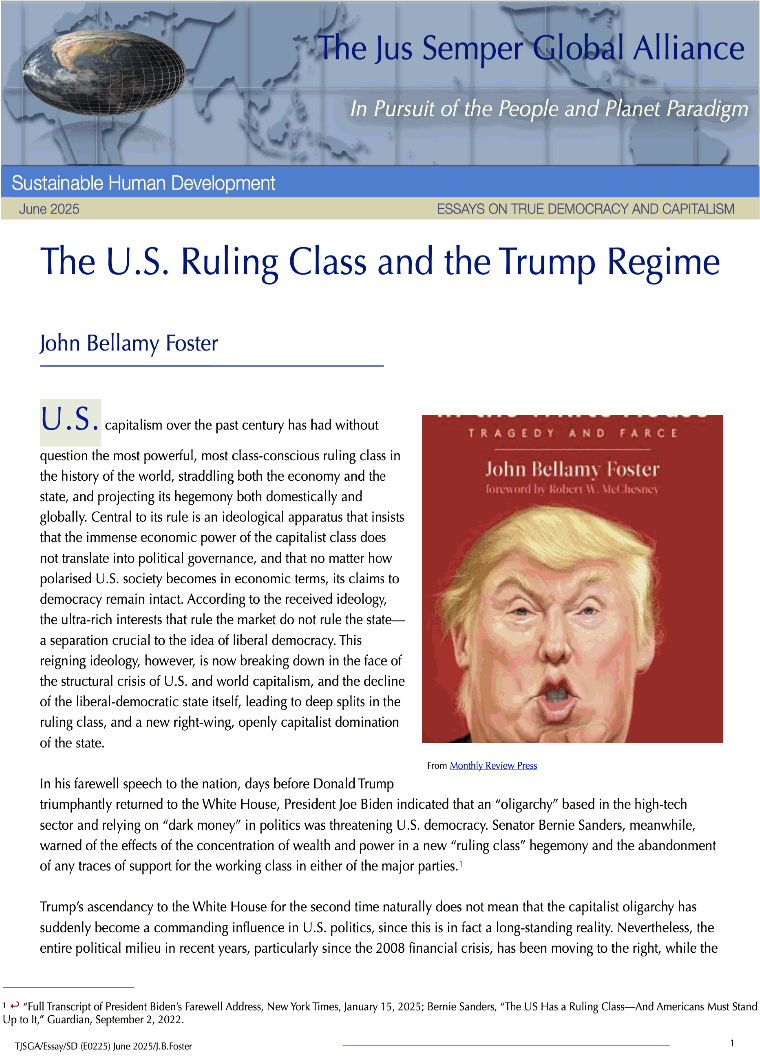John Bellamy Foster In his farewell speech to the nation, days before Donald Trump triumphantly returned to the White House, President Joe Biden indicated that an “oligarchy” based in the high-tech sector and relying on “dark money” in politics was threatening U.S. democracy. Senator Bernie Sanders, meanwhile, warned of the effects of the concentration of wealth and power in a new “ruling class” hegemony and the abandonment of any traces of support for the working class in either of the major parties. Trump’s ascendancy to the White House for the second time naturally does not mean that the capitalist oligarchy has suddenly become a commanding influence in U.S. politics, since this is in fact a long-standing reality. Nevertheless, the entire political milieu in recent years, particularly since the 2008 financial crisis, has been moving to the right, while the oligarchy is exercising more direct influence over the state. A sector of the U.S. capitalist class is now openly in control of the ideological-state apparatus in a neofascist administration in which the former neoliberal establishment is a junior partner. The object of this shift is a regressive restructuring of the United States in a permanent war posture, resulting from the decline of U.S. hegemony and the instability of U.S. capitalism, plus the need of a more concentrated capitalist class to secure more centralised control of the state.
For a full read of this brief, click here or on the picture to download the pdf file.
|

- © The Jus Semper Global Alliance
| Home |  | Resources |  | Democracy Best Practices |  | The U.S. Ruling Class and the Trump Regime |


